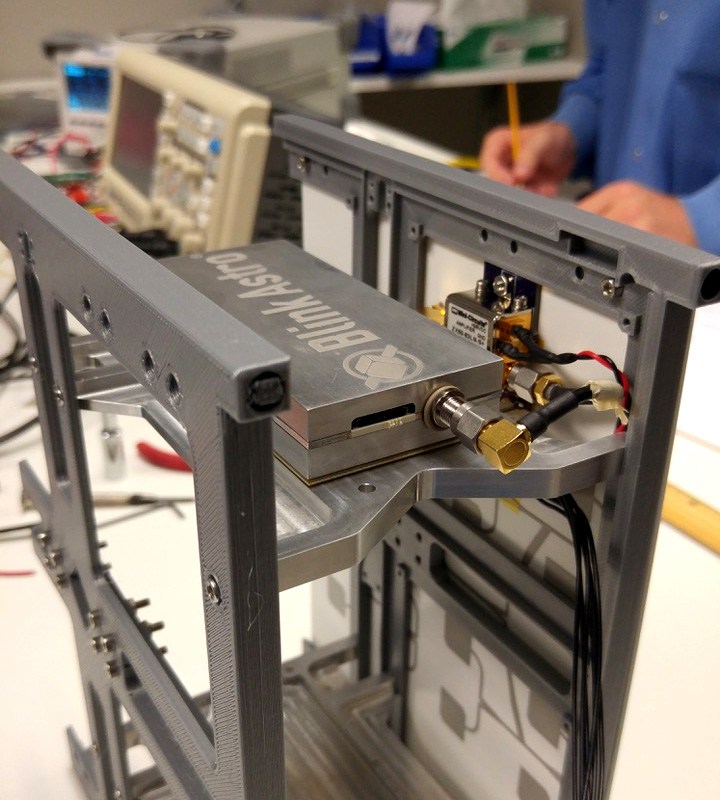
Atlanta, GA, August 6, 2018 – Blink Astro, LLC (now a part of SpaceWorks Orbital) announced today the shipment of its custom radio receiver payload to be integrated into NanoAvionics’ M6P 6U spacecraft platform. Earlier this year, Blink® announced it had signed a contract with NanoAvionika, LLC (NanoAvionics) to launch its initial technology demonstration payload for creating a low cost global IoT connectivity satellite constellation.
The shipment and launch of Blink’s radio payload is the final test in validating Blink’s low-cost IoT architecture, and it brings Blink® a step closer to providing seamless device connectivity to customers across the world. Bill Doncaster, Blink’s Senior Systems Engineer, said, “this is a major milestone for the entire Blink team marking the completion of a multi-year testing and development effort for our end-to-end connectivity solution.”
The primary objective of the mission will be to demonstrate the reliability and quality of Blink’s end-to-end device connectivity solution. The satellite is expected to launch on a PSLV in late 2018, and the test period will last approximately six months once the spacecraft is in orbit.
Specific tests to be conducted during the technology demonstration mission will include reception and coverage of Blink’s low cost IoT ground terminals, large point-to-point network architecture antenna performance, and overall signal quality.
Blink Astro® is creating a satellite constellation to serve the rapidly growing Internet of Things (IoT)/Machine-to-Machine (M2M) market. There are expected to be 125 billion connected devices by 2030 and Blink® is helping serve this market.
The completed BlinkSat™ constellation will serve a variety of markets including precision agriculture, transportation, energy, environmental monitoring, and defense. In November 2017, Blink® released its first ground terminal device, the BlinkR™ Series 1000, showcasing Blink’s end-to-end customer solution for monitoring and analyzing the precision agriculture sector. Building on the success of the BlinkR™ Series 1000 release, the upcoming spaceflight demonstration mission provides a key demonstration of Blink’s proprietary radio technology and lays the foundation for the future BlinkSat™ constellation.
“This mission serves as an important risk-reduction technology demonstration for our long-term satellite-based IoT plans at Blink,” said Dr. John Olds, Blink Astro’s CEO. “The IoT market is rapidly expanding in a number of sectors – smart cities, smart farms, smarter shipping and tracking, marine and environmental monitoring, and novel military data collection needs. Our long-term goal is to make satellite-based IoT competitive with cellular services on a price and reliability basis, while leveraging the unique global coverage advantage available to us from Earth orbit. Making the space segment more affordable by deploying very high performance, low data rate receivers compatible with the Smallsat form factor is a key part of our business solution.”

